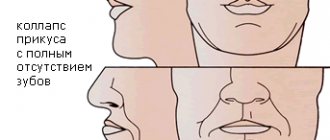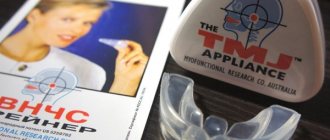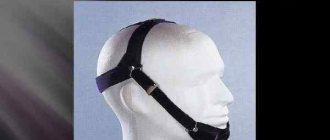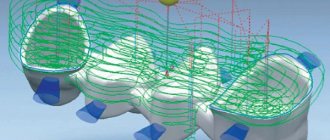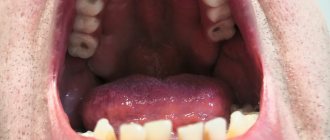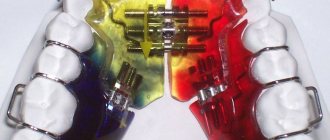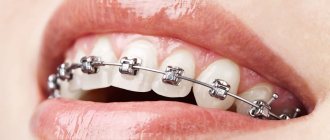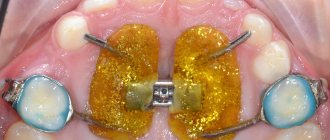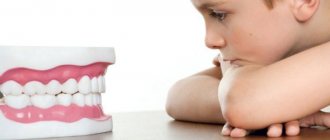7896
Orthodontic treatment does not always involve the use of special devices. In some situations, it is enough to use myogymnastics.
This option is an effective remedy for correcting abnormal bites , which has been proven by studies conducted over 50 years.
Causes of dental pathologies
Anomalies in the structure of the jaw and dental pathologies begin to form from birth. One of the reasons is the pacifier. However, abnormal formation of the jaw can also be caused by improper breathing through the mouth, as well as some bad habits. Thumb sucking is one of the persistent habits in children, which later leads to orthodontic pathologies.
Parents should pay special attention to forming the right habits in their child and weaning them from the wrong ones.
Breastfeeding forms the baby's correct bite by training the orbicularis oris muscle, tongue, and neck. Bottle feeding contributes to disruption of the maxillofacial muscles if the nipple has too large a hole.
The transfer to artificial feeding instead of breastfeeding may be due to reasons independent of the mother’s wishes. Therefore, carefully monitor the development of the baby’s jaw and show it to the dentist during the development. If the hole in the nipple is too wide, the baby gets full faster and stops sucking. Consequently, the muscles do not train and become weak.
Harm from pacifiers
How is a pacifier harmful to the formation of a bite? When sucking a pacifier, the tongue gets used to the incorrect position in the oral cavity. The tongue should be positioned on top of the nipple while sucking, but in babies everything happens the other way around. The lower position of the tongue (under the nipple) contributes to incorrect bite formation. In order not to spoil your baby’s bite, give him a pacifier as little as possible, and remove it from his mouth during sleep.
At the age of 1.5-2 years, the baby should be weaned off the pacifier so that the bite does not deteriorate.
Thumb sucking
Some babies try to replace the lack of a pacifier by sucking their thumb or the corner of a pillow. The child must be weaned from this habit immediately; it is even more harmful than sucking a pacifier. Sometimes the habit of falling asleep with your thumb in your mouth remains for life.
Thumb sucking leads to a very severe defect in the structure of the dental system, when the front teeth protrude forward and diverge to the sides. The bite is formed taking into account the position of the thumb between the lower and upper teeth, so there is an empty space. In addition to aesthetic dissonance, this arrangement of the frontal molars makes it impossible to bite food with the front teeth. Front teeth that are pushed forward are often susceptible to injury.
Mouth breathing
How can improper breathing affect the formation of the dental system? When breathing through the mouth, the pressure in the oral cavity that the cheeks exert on the upper row of teeth is disrupted. Because of this, the upper jaw arch narrows in size and the teeth grow crowded.
When should you pay attention to proper breathing? This must be done from the first days of the baby’s life and closely monitor his breathing while sleeping with a pacifier. As soon as the baby stops crying and falls asleep, the pacifier is immediately removed from the mouth. If you see that your baby has opened his mouth in a dream, carefully close it with your hand.
What to do if a child’s adenoids are enlarged and he cannot breathe through his nose? At this time, you need to make sure that mouth breathing does not become a habit. After healing from a runny nose and cold, you should monitor the child’s correct breathing during sleep and wakefulness. There is a special set of exercises to practice breathing through the nose after removal of the adenoids.
Lower lip suction
There is also a habit among children that subsequently negatively affects their appearance. Because of this bad habit, a gap is formed between the teeth, the size of which is equal to the thickness of the lower lip. Myogymnastics can correct an abnormal bite; hardware correction is also recommended.
Placing tongue between teeth
This bad habit leads to the formation of a gap between the upper and lower teeth. This gap corresponds to the size and shape of the tip of the tongue, which the child is accustomed to sticking forward. There is also a habit, invisible to adults, of placing the tongue between the chewing teeth (on the side). This pathology can only be noticed by a dentist.
As a result of incorrect position of the tongue in the oral cavity, the lateral molars sag and the bite is formed abnormally. The defect can be corrected with the help of functional devices and myogymnastics.
Improper swallowing
Doctors divide the swallowing function into conscious and uncontrolled. Correct swallowing should be noticeable only by the movement of the Adam's apple. If the facial muscles tense during swallowing, these are already symptoms of pathology. Improper swallowing leads to incorrect placement of molars in the dentition. If you notice that your child is swallowing food or drinking water in a special way, immediately take him to the orthodontist.
Diagnostics
Diagnosis by an orthodontist is carried out in several stages:
Taking impressions of teeth. Based on the casts, plaster jaw models are made.
Orthopantomogram. An orthopantomogram provides the doctor with a high-quality image in which he sees bone tissue, main sinuses, roots and pathologies with visible boundaries.
Teleradiogram. A lateral x-ray of the skull is taken. Using this image, the doctor determines the angle of inclination of the front teeth on both jaws and the direction of growth of the jaw structures.
Computer tomogram. This is a 3-dimensional image of the jaws and teeth for a more accurate assessment of all anatomical features.
Photo protocol (diagnostic photographs).
Facial aesthetics. When drawing up a treatment plan, the doctor takes into account the shape of the patient’s lips, chin, nose, facial contours and features of the patient’s smile.
Indications for myogymnastics
The formation of a correct bite depends on the coordinated work of a group of muscles located around the dentition. Any disturbances in muscle function negatively affect the bite, the position of the jaw arch and teeth. With the help of myogymnastics, you can restore the functioning of the jaw muscles, straighten the bite, and correct the abnormal position of the teeth.
Gymnastics can be performed before orthodontic treatment, together with it, or after it to consolidate the result. The treatment method is determined by the orthodontist.
Myogymnastics can be prescribed as part of a complex treatment, or as an independent technique for correcting bite defects.
Myogymnastics has the following effect on the maxillofacial apparatus:
- activates bone tissue growth;
- helps strengthen muscles;
- forms a compensating mechanism;
- normalizes functionality;
- has a beneficial effect on tissue trophism.
As a result of gymnastic exercises, the jaw muscles are actively rebuilt, the jaw bones acquire an anatomically correct structure and shape.
When is it prescribed?
- malocclusion of varying severity;
- speech dysfunction;
- impaired tone of the facial muscles;
- incorrect placement of tooth crowns;
- preventive measures.
If a child has incorrect posture, then along with myogymnastics a set of physical exercises is prescribed to correct the position of the spinal column.
Myogymnastics is especially effective at the age of 4-7 years.
The earlier a child begins to perform gymnastic exercises, the greater the chance of correcting the pathology without medication and orthodontic intervention. After nine years, myogymnastics cannot be used as an independent technique for correcting malocclusions. However, it is recommended to perform it as an additional measure of influence on the dental system.
Main directions
The list of functions performed by an orthodontist includes:
- adjustment of the position of individual elements;
- correction of bite and occlusion;
- carrying out prevention of violations.
Before starting orthodontic procedures, the dentist examines and diagnoses the patient’s condition, determining the measures necessary to restore the natural appearance. Orthodontics in dentistry helps to correct noticeable deviations, preventing and eliminating the consequences of various diseases.
Rogers technique
The first methodological developments for correcting orthodontic defects of the dental system were proposed by the American dentist A. Rogers. According to his recommendations, the exercises should be performed as follows:
- muscles should contract as widely as possible;
- the intensity of contractions should not exceed the natural load;
- exercises must be performed on a regular basis;
- movements should not be sharp or intermittent, but smooth and slow;
- exercises should be repeated until slight (local) fatigue appears;
- Myogymnastics can be done with children aged 4 years and older.
The rules that Alfred Rogers proposed to take as a basis are still relevant today. Based on these rules, modern orthodontists create their own sets of exercises for the correction of dentofacial pathologies.
Installation
How is braces fixed technically?
- The tooth is treated with gel, then a special varnish is applied.
- Braces are fixed to the surface of the tooth with orthodontic filling material.
- On the last teeth in the row there are locks into which the arch is inserted.
- Next, an arch is inserted into each bracket by pressing on the groove and the lid is closed in turn from the center to the sides.
- If these are ligature braces, then the arch to each bracket is a metal or elastic ligature. This is the main disadvantage of ligature braces, because the ligature, especially elastic, loses its properties over time, stretches and ceases to adequately hold the arch in the bracket, and it is the arch that is the driving force.
- After closing the braces, it is also necessary to install special stoppers on the front braces
Contraindications
You cannot practice myotherapy on your own, as this can result in unpleasant results. An orthodontist should prescribe gymnastics after checking the condition of the facial muscles. The patient will not be able to independently determine the degree of underdevelopment of the jaw muscles, cartilage and joints.
Contraindications:
- severe malocclusion (third degree and above);
- immobility of facial muscles;
- immobility of the jaw joints;
- jaw hypotrophy.
These serious pathologies require surgical correction or other forms of orthodontic intervention.
It is also necessary to take into account the duration of osteo-maxillary changes, which depends on the age of the patient. If the anomaly developed a long time ago and was fixed for quite a long time, the gymnastic complex will not help correct the defect. Therefore, an old dental defect is a contraindication when prescribing gymnastics.
The exercises should be performed on a regular basis to see the effect of using the technique. If you start doing it and quit, all the results achieved will disappear.
What does efficiency depend on?
To maximize the effect of exercise, you need to consider some factors :
- gymnastics must be carried out efficiently : contract muscles as much as possible and constantly increase the number of exercises;
- if possible use additional devices to increase the load on the muscular system;
- carry out systematically at the same time;
- a set of exercises should only be selected by an orthodontist .
After using myotherapy in patients of the same age with the same diagnosis, the result is often completely different. Most often this happens due to non-compliance with recommendations and lack of consistency.
Myogymnastics for children
It is advisable to start gymnastics for training the orbicularis facial muscle at the age of 4-7 years. During this period, you can achieve high-quality results in correcting malocclusion. The child already understands what is required of him and can work together with the doctor or parents at home. With a child of kindergarten and primary school age, exercises are carried out in the form of a game. This saves the baby from overwork and decreased concentration.
Exercises for children should be understandable and easy to perform. Children can do gymnastics independently or in a group. Control over the correct execution of exercises rests with adults (parents, health workers, educators).
Before practicing myogymnastics, you should make sure that the child does not have problems with nasal breathing. Improper breathing becomes an obstacle to achieving results from myogymnastics. When mouth breathing, special exercises are performed to eliminate this habit. Strengthening the orbicularis oris muscle will correct the deformation of the upper jaw arch and make the face shape more attractive and mobile.
You need to pay attention to training the muscles of the tongue so that it is always in the correct position: the tip touches the palate. The correct position of the tongue will form clear diction and articulation, that is, eliminate or prevent speech defects.
In addition to gymnastics and exercises, children should be offered more solid vegetables and fruits - apples, carrots, turnips. Consumption of the listed products in their raw form helps strengthen the facial muscles, massages the gums, and forms a correct bite.
Strengthening the orbicularis oris muscle
These exercises are simple to perform, but help strengthen the muscles responsible for the functionality of the mouth.
- Take an ice cream stick with your lips and hold it until your lips feel slightly tired. Instead of an ice cream stick, you can take a school ruler (wash it first).
- Two medium-sized buttons are attached to the cord at a distance of 15-17 cm from each other. You need to grab one button with your lips, and take the second with your fingers and pull it to the side. The exercise is practiced 2-3 times a day, the number of repetitions is 10.
- Blow on the pinwheel, repeat 10 times in two or three approaches a day.
- Inflate 10-15 balloons daily.
Strengthening the muscle that protrudes the mandible
These exercises are necessary for bottle-fed babies. Their lower jaw goes back. This is called a distal bite.
- Move the lower jaw forward so that the lower incisors are positioned in front of the upper ones. The jaw is held in this position for at least 10 seconds.
- Repeat the exercise with your head turned to the right.
- Repeat the exercise with your head turned to the left.
- As you master the exercise, the execution time is extended and the frequency of repetitions is increased up to ten times.
- A more complicated version of the exercise: stand straight, feet shoulder-width apart, throw your head back, and put your arms back. After this, you need to extend the lower jaw and hold it for as long as possible. You can’t move your jaw sharply; everything needs to be done smoothly and at a moderate pace.
- You need to reach your own nose with the tip of your tongue. First do the exercise 2-3 times, then increase the number of repetitions.
Strengthening the upper jaw
Click your tongue, feeling its position on the roof of your mouth. You can perform the exercise for as long as you like, let the baby learn to feel the tip of the tongue in the correct position.
With your lips closed, you need to move your lower jaw back. This should be done at the same time: close your mouth and retract your jaw. The exercise should be repeated in the morning, afternoon and evening 2-3 times. You should not suddenly open and close your mouth; the exercise is performed smoothly at a moderate pace.
Strengthening the language
The functions of the tongue are very important not only for bite, but also for clarity of diction and articulation. Incorrect position of the tongue is established during thumb sucking, the habit of putting everything in the mouth, and improper swallowing. Exercises are also indicated after surgical correction of a short frenulum.
- Open your mouth slightly and lick your upper and lower lips with the tip of your tongue, from one corner of your mouth to the other.
- Try to reach the nose with the tip of your tongue, and then the chin.
- Run the tip of your tongue over your teeth, as if counting them.
- Clicking tongue.
These exercises should be repeated in the morning, afternoon and evening several times in a row.
If the back wall of the tongue is weak, rinse your mouth up to five times a day, yawn widely 5-7 times in a row.
Vestibular plate
This is a special plate that is used to correct bite defects, strengthen the maxillofacial muscles, and correct the abnormal position of the tongue. At night the plate is placed in the child’s mouth, and during the day they do exercises with it. The plate is held with the lips, and the ring is pulled forward with the hand.
You need to hold the plate with your lips, not allowing it to be pulled out of your mouth. It is recommended to perform the exercise in the morning/evening 12-15 times in a row. You can start with a double repetition, gradually increasing the number of repetitions to fifteen.
The vestibular pacifier plate is recommended to be given to children aged two to four years. It calms the sucking reflex, gradually replacing it with chewing. The plate is made of medical silicone and is absolutely safe for the child. According to statistics, 85% of babies wean themselves off the pacifier after a couple of weeks of using the plate.
Benefits of the vestibular plate
- accustoms the tongue to the correct position in the oral cavity;
- helps get rid of mouth breathing;
- corrects lip closure;
- eliminates speech defects;
- strengthens the orbicularis oris muscle.
If a child has a pronounced defect in the structure of the jaw, a special plate with a visor is used for correction.
If the child is used to putting his tongue between the teeth, use a special plate with a flap.
For speech defects (congenital or acquired), a plate with a bead is used. Speech defects are common among preschool children. These include:
- nasality;
- stuttering;
- incorrect pronunciation of sounds;
- slow or accelerated speech.
Also, a plate with a bead is indicated for a weak tongue, when its muscles are underdeveloped.
Pre-orthodontic trainer
This device is used to help correct dental defects and speech functions. It is worn for just an hour during the day and then throughout the night. The use of a trainer facilitates hardware orthodontic treatment and promotes rapid restoration of the functions of the tongue, swallowing, and pronouncing sounds. The trainer also accustoms the tongue to the correct position in the mouth, eliminates mouth breathing and eliminates the habit of sucking a finger or lower lip.
Hypotonicity of muscles
- Make a tube out of your lips (like for an air kiss) and hold them in this position until you feel slightly tired. Then slowly stretch your lips into a smile.
- Puff out your cheeks with pursed lips. At this time, breathe through the nose. Then you need to squeeze the air out of your cheeks by pressing on them with your palms. You cannot unclench your lips.
- Inflate the space first under the upper lip, and then under the lower. Continue alternating the upper and lower positions until you feel slightly tired.
- Blow on the object, simulating blowing out a candle.
- Throw a piece of cotton wool high and blow on it, not letting it fall to the floor.
- With your lips compressed as much as possible, stretch your mouth to the sides using your fingers.
- Place cotton swabs under the lower and upper lips, in this state try to pronounce words clearly.
Incomplete lip closure
- Press your lips tightly and make circular movements with your tongue behind your closed lips.
- Move the tip of your tongue along the roof of your mouth, imitating the movement of a paint brush.
Improper swallowing
Infantile swallowing is characteristic of infants up to one year, sometimes up to two years. This swallowing differs from an adult swallow in that the tip of the tongue touches the lips.
- A silicone ring is placed on the tip of the tongue, and then the child is asked to swallow saliva. The ring is issued by an orthodontist.
- With your lips closed, you should press the tip of your tongue on the bulge (palate) above the upper teeth. The exercise is repeated without feeling slightly tired.
Exercise Tips
Remember that for a good result from using myogymnastics you need to be consistent, systematic and active. A conscious approach to business, faith in the result and perseverance in achieving the goal are required.
Tips for doing the exercises:
- actively load the muscles;
- carry out movements with maximum amplitude;
- gradually increase the speed of execution and the number of repetitions;
- muscle rest after exercise is equal in time to their activity;
- All exercises are performed until you feel tired; it is not recommended to overload the muscles;
- It is advisable to perform exercises at the same time of day.
Myocorrection has the greatest effect before the change of baby teeth, when the jaw is not yet formed. Gymnastics is also carried out when replacing baby teeth with molars - from nine to twelve years. But in the second case, longer treatment is required.
Advantages and disadvantages of the method
The main advantage of this technique is that the adjustment can be carried out without the use of orthodontic appliances. Thanks to this, the child does not experience psychological or physical discomfort.
This eliminates injury to mucous membranes and damage to dental tissue .
The disadvantages of myotherapy include:
- duration of treatment;
- low efficiency in relation to pronounced anomalies;
- in the absence of consistency, regression quickly occurs.
Bottom line
Myogymnastics is an effective method for correcting dental anomalies. It can be used as an independent treatment, in combination with hardware treatment and as a prophylactic agent. Until the child’s baby teeth are replaced by permanent teeth, the issue of myotherapy needs to be resolved.
After a full course of gymnastic exercises, the chewing function is restored, the tone of the facial muscles is normalized, and the lower jaw becomes more mobile. In addition to restoring the functionality of the maxillofacial region, diction is corrected and articulation becomes clearer.
Remember that a set of exercises should be selected by an orthodontist based on the diagnosis of the child’s oral cavity. It is not recommended to work with your baby on your own.
Sources used:
- Anikienko, A.A. Hardware orthodontic treatment and its subordination to the physiological laws of irritation / A.A. Anikienko, N.V. Pankratova, L.S. Persin. — M.: Medical Information Agency
- Andreishchev, A.R. Combined dentofacial anomalies and deformities / A.R. Andreischev. — M.: GEOTAR-Media
- Kalamkarov, Kh. A. Orthopedic treatment of pathological abrasion of hard dental tissues / Kh.A. Kalamkarov. — M.: Medicine
At what age should you start correcting your bite?
Dentists believe that occlusion correction can be carried out at any age using appropriate techniques. Thus, children are not treated with braces because their skeletal system is in active growth, and the bones, including the dentofacial apparatus, have not yet formed. Therefore, young children, before they have permanent teeth yet, are treated with myotherapy, plates and trainers. Note: such methods are used in the presence of non-critical developmental defects. Complex congenital pathologies that have a negative impact on the health or quality of life of the baby are treated surgically.
The optimal period of treatment with braces is from approximately 12 to 16 years. At older ages, the process takes longer.
Important: some dental anomalies can be corrected without the use of braces. The possibility of such treatment is determined by the doctor.
